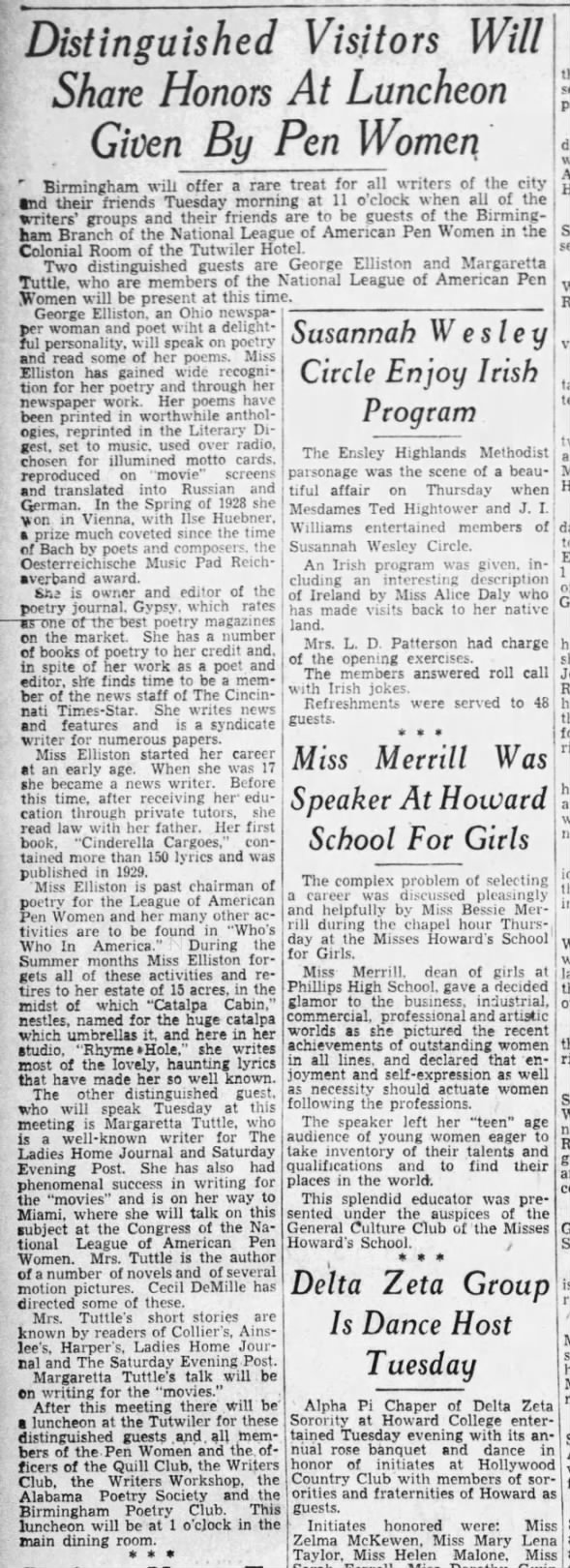Shown above, page 274 from my personal copy of Important American Poets, ed. Edith Warren (Valiant House, 1938) with three poems by Clare Harner, later Clare Harner Lyon:
SCARECROW
(Hokku)
Hate is a scarecrow
That frightens all singing birds
From the fields of life.
PURITAN
Corseted are my emotions
Till I'm unwholesomely slim;
I'm laced with prescribed devotions --
By nature, I'm not so prim!
SHE WALKED WITH THREE
Three were the hounds that followed her,Though never far behind.Relentless their walk as whispered slur --Illusions of harried mind.And all who saw her thought her queerAs she measured her hunted pace;She looked as if a presence were near,With fright a veil for her face.And only she knew the curs were there:The hounds of envy, pride, and despair.














